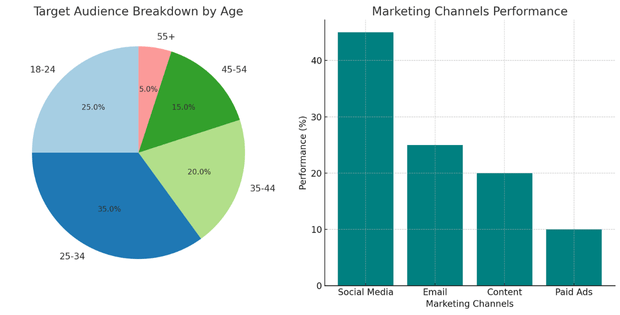
How to Master Product Photography and Video Shooting for Your Website
In today’s digital world, high-quality visuals are essential for capturing your audience’s attention. Whether you’re showcasing products, promoting services, or creating content, great photos and videos can make or break your website. Here’s a step-by-step guide to help you or your clients take professional-looking visuals without breaking the bank.
1. Understanding Your Equipment
You don’t need a high-end camera to create stunning visuals; even smartphones can produce exceptional results. Here’s what you need to know:
- Smartphones: Most modern smartphones have powerful cameras. Use features like portrait mode or manual settings to enhance your shots.
- DSLR or Mirrorless Cameras: If you have access to these, they’ll give you more control over lighting and depth of field.
- Tripod: A stable shot is crucial for both photos and videos. Invest in a tripod or use a flat surface to avoid shaky results.
- Lighting Equipment: Good lighting makes all the difference. Consider ring lights, softbox lights, or natural light for the best effect.
2. Setting Up Your Shot
Creating a visually appealing setup is essential for drawing attention to your product or subject. Follow these steps:
- Background: Use clean, clutter-free backgrounds. White or neutral tones work best for most products.
- Lighting: Place your light source at a 45-degree angle to your subject to reduce harsh shadows. Avoid using your camera’s flash, as it can create unwanted glare.
- Angles: Experiment with different angles to find the most flattering perspective for your product. For example:
- Eye Level: Ideal for lifestyle or action shots.
- Flat Lay: Great for smaller items like jewelry or stationery.
3. Capturing High-Quality Photos
Here are some tips to ensure your photos stand out:
- Focus: Always ensure your subject is in focus. Use your camera’s auto-focus or manual focus if available.
- Resolution: Shoot in the highest resolution your device allows to ensure sharp, detailed images.
- Editing: Use photo editing tools like Adobe Lightroom, Canva, or Snapseed to enhance colors, brightness, and contrast.
4. Shooting Videos That Engage
Videos are more dynamic and can tell a story about your product or service. Follow these guidelines:
- Script It: Plan what you’ll say or show before you start recording. A clear script ensures you stay on point.
- Steady Shots: Use a tripod or gimbal for smooth, professional-looking footage.
- Lighting: Just like with photos, good lighting is key to high-quality video.
- Audio: Use an external microphone for clear sound. Background noise can distract your audience.
- Editing Software: Tools like iMovie, Adobe Premiere Rush, or CapCut are user-friendly and great for polishing your videos.
5. Common Mistakes to Avoid
- Overexposure: Too much light can wash out your subject. Adjust your settings or reposition your lights.
- Cluttered Backgrounds: Keep it simple to ensure the focus stays on your subject.
- Ignoring Aspect Ratios: Websites and social media platforms often require specific dimensions. For example:
- Instagram: Square (1:1) or vertical (4:5).
- Websites: Landscape (16:9) works well for most banners and headers.
6. Showcasing Your Work Online
Once you’ve captured stunning visuals, make sure they shine on your website:
- Optimize File Sizes: Compress images using tools like TinyPNG or JPEGmini to ensure fast loading times.
- SEO for Images: Use descriptive file names and add alt text to improve search engine rankings.
- Consistent Aesthetic: Stick to a cohesive style or theme for all your visuals to create a professional look.
Conclusion
With the right tools and techniques, anyone can create eye-catching photos and videos that elevate their website’s appeal. Practice regularly, experiment with different setups, and don’t be afraid to get creative. High-quality visuals are an investment that can significantly boost your online presence and engagement.
Need More Help? Reach out for personalized tips or consultations to take your photography and videography skills to the next level!


